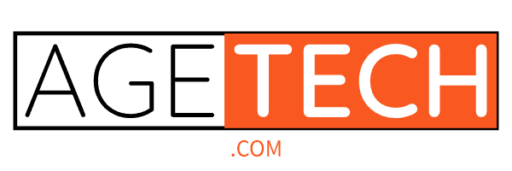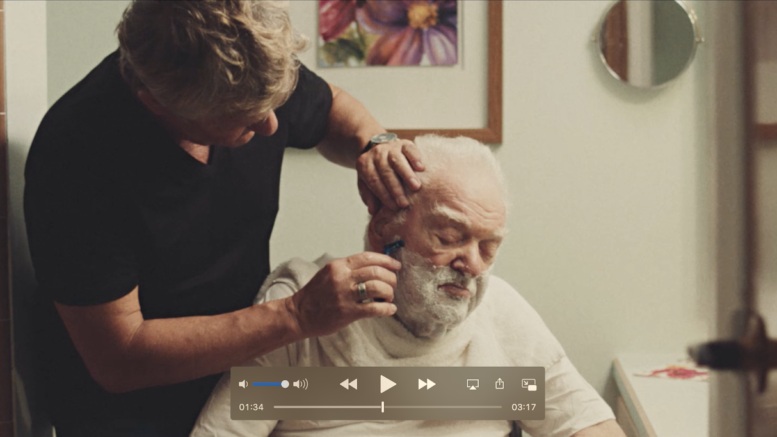
[This post is by Sheridan Jobbins, Narrative Director at Shapeable.ai and Stephen Johnston, Co-founder, Aging2.0]
Procter & Gamble Ventures (PGV) are looking to ‘redefine aging at home’, and we’re excited to announce they’ve just renewed their partnership with Aging2.0, so we can help them do exactly that. As part of our partnership we’re looking to change the narrative around aging – and are looking for companies from across our Chapter network who building new products based on optimism, intimacy and potential (see more info below). Contact us at pgv@aging2.com if you’d like to learn more.
The work we’re doing at Aging2.0 is around making systemic changes, not just point solutions, and driving lasting behavior change by older people as well as entrepreneurs and policy makers. We need to change the frame of reference, not just provide short term fixes. As sucn we need new ‘market narratives’ which are today stumbling blocks but can help us unlock the potential of this market.
The economics of aging. We all know the stats that the vast majority of people want to age at home. Yet the lion’s share of the funding and attention goes to the less than 5% of people in residential care. This disparity is related to the difficulty of getting products and services into private homes and the simplicity of creating a business to business model with aged care providers.
The historical context. There are historic connections to ‘care homes’ which make the prospect unappealing to many. These date back to the 19th century Poor Houses, and continued in the US, even after the introduction of the dole in 1939.
“The reason old people wound up in poorhouses, it turned out, was not just that they didn’t have money to pay for a home. They were there because they’d become too frail, sick, feeble, senile, or broken down to take care of themselves anymore, and they had nowhere else to turn for help.” – Atul Gawande, “Being Mortal”
These historic experiences are in the living memory of many older adults today. They add to the negative feelings about aging – fears of isolation, poverty, cruelty, loss of autonomy, and shame.
As with assisted living, these negative feelings around aging create barriers to the market. Chetan Parekh from PGV reflected on his experiences at an Aging2.0 meeting last year:
“We put out a call for products designed for older caregivers. 17 of the 25 responses were for sensor and monitoring technology because ‘fear’ is a simple sell. Shame is also an issue. We have a group of older adults that we use for market consultation. I was in the home of one man, and he was ashamed to show me his bathroom cabinet because of the products it contained. The reality is, nobody wants to be caught with adult diapers.” – Chetan Parekh
The Narrative Market: Repositioning Fear, Shame & Deficit.
Parekh identified three dominant emotions which block the market: Fear, Shame and Deficit. By analysing these, we can consider flipside stories, and seek the narrative facts which support them.
|
NEGATIVE |
→ |
POSITIVE |
|
Fear (The Lonely War Widow unable to defend herself. The pensioner dying in the poorhouse) |
→ |
Optimism (The wisdom of the elders. The plucky old battler) |
|
Shame (The bewildered, soiled, pensioner – or as The Simpsons parodied “The Crazy Old Man Singers”) |
→ |
Intimacy (The love shared as roles reverse and child nurtures parent) |
|
Deficit (The vulnerable, broken lady, who’s ‘fallen and can’t get up’) |
→ |
Potential (Contributions of wisdom, experience, able to thrive) |
The Market Opportunity: Optimism, Intimacy & Potential
Optimism: Despite the current pandemic, we do live in the age of miracles and wonders. By engaging a multi-generational approach to Active Aging and Longevity we can create a more community centred and optimistic approach to aging while taking some of the burden off elderly partners and adult children.
There are plenty of solutions relating to creating an optimistic future for older adults. Ideas for services and products around lifelong learning, apprenticeships for older adults, accessible volunteering, multi-generational living, shared accommodation, community building, supporting carers to communicate with adults suffering cognitive difficulties.
Intimacy: Helping parents and grandparents navigate aging can emphasise the bonds of love and intimacy. Compassionate understanding can reduce some of the shame around incontinence, loss of mobility, dementia and sickness.
Potential: An expectation that age is accompanied by loss ignores the benefits of wisdom, experience and pattern recognition that come with longer lives. Today’s complex world requires navigators who can see patterns and draw upon disparate experiences to connect with a compassionate mindset and build new opportunities.
A great example of a campaign which helps to shift the narrative from shame to intimacy is Procter & Gamble’s advert for their new Treo razor: “Handle With Care: Gillette’s New Assisted Shaving Razor”.
Marketing to younger caregivers might also go a long way to helping bridge the divide between shame and intimacy.
Millennials: Millennial adults, those in their 20’s and 30’s, are often painted as slackers. But a study by AARP in 2018 created a very different picture.
-
They average 21 hours per week – 73% of them while working
-
Only 19% of those discuss caregiving at work, compared to 47% of older carers
-
54% say their work assessment has been negatively affected by mentioning their caregiving duties
-
Of 1,200 millennial carers surveyed, the average they spent of their own money on caregiving was $6,800 per annum
That study suggests that the quarter of caregivers who are millennials (10m) represent a $68 billion market. Products which target millennials, and which support aging at home are more than a marketing opportunity, they’re a way to help caregivers and older adults build better and more supportive relationships between the generations.
So, what’s your solution? At Aging2.0 we are helping PGV find solutions that address some of the biggest threats to being able to age and thrive at home (see more info here). Of particular interest are products which may:
-
Reduce the risks in showering
-
Improve Personal Hygiene
-
Help with continence care (including UTI management)
-
Hydration detection & management
-
Skin health management
-
Improve Mobility and Fall Prevention
Ideal solutions will:
-
Solve a hard problem in a dignified way
-
Address needs for both the older adult and those who care for them
-
Have early proof that people want to try the solution, and those who have tried it, liked it and want to use it again
If you’re making a meaningful impact with a new product, or are aware of products that help to create behaviour change, shoot us an email to pgv@aging2.com. We’ll be following up and raising the profile of the most interesting submissions and working with PGV in the coming months to double down on some of the emerging opportunity areas.
About the Author
Stephen Johnston MBA is a co-founder of Aging2.0 a global innovation platform for aging and senior care, founder of Fordcastle, an innovation consultancy and a member of the Future Agenda, the world’s largest open foresight initiative. Stephen serves on the board of Music and Memory a New York 501c3 nonprofit focused on improving the quality of life for older people, He is co-author of Growth Champions (Wiley, 2012), a book about sustainable corporate growth. He has an MA in Economics from Cambridge University and an MBA from Harvard Business School where he was a Fulbright Scholar.

